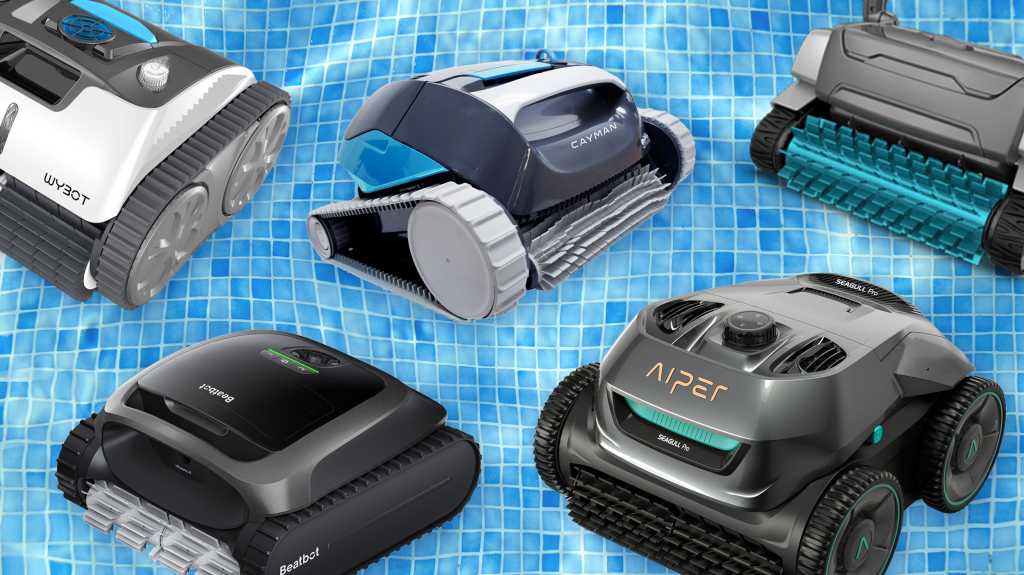A swimming pool is a major investment that needs continual maintenance not only to retain its value but to be safe to swim in. But if you’re still swinging a long-handled net to skim leaves and scrubbing its walls and floor to remove algae, you owe it to yourself consider investing in a modern pool-cleaning robot that can do that grunt work for you.
Robot pool cleaners come in various shapes and sizes, diverse capabilities. And as you might imagine, they come with a wide array of price tags, with the most sophisticated models going for $2,000 or more. Here are our top picks, followed by a buyers’ guide that will help you determine what you need in a pool-cleaning robot.
Why you should trust us
TechHive’s editors and contributors have been evaluating smart home products and smart appliances for many years, and we’ve already tested many of the latest pool-cleaning robots in the real-world environment of an in-ground swimming pool at a home near Austin, TX.
Our top picks in robot pool cleaners
Aiper Seagull SE – Best robot pool cleaner for smaller pools
Price When Reviewed:
$249.99
Why we like the Aiper Seagull SE
If your pool is on the small side, Aiper’s entry-level pool bot should have no trouble cleaning debris from it. The 8-pound device is easy to maneuver, zooming around the pool for about 90 minutes before its battery dies out. It lacks much in the way of features beyond its on/off switch, but it’s a capable and incredibly low-cost choice if all you need is occasional help scooping up leaves that you’d otherwise have to collect by hand.
Who should buy the Aiper Seagull SE
Aiper’s entry-level pool bot is best for people with smaller swimming pools—up to about 850 square feet. If you’re working with a tight budget, you could try deploying in a larger pool, but be aware that its battery will need multiple charging cycles to get the entire job done.
Read our full
Aiper Seagull SE review
Aiper Seagull Pro – best robot pool cleaner robot for large pools
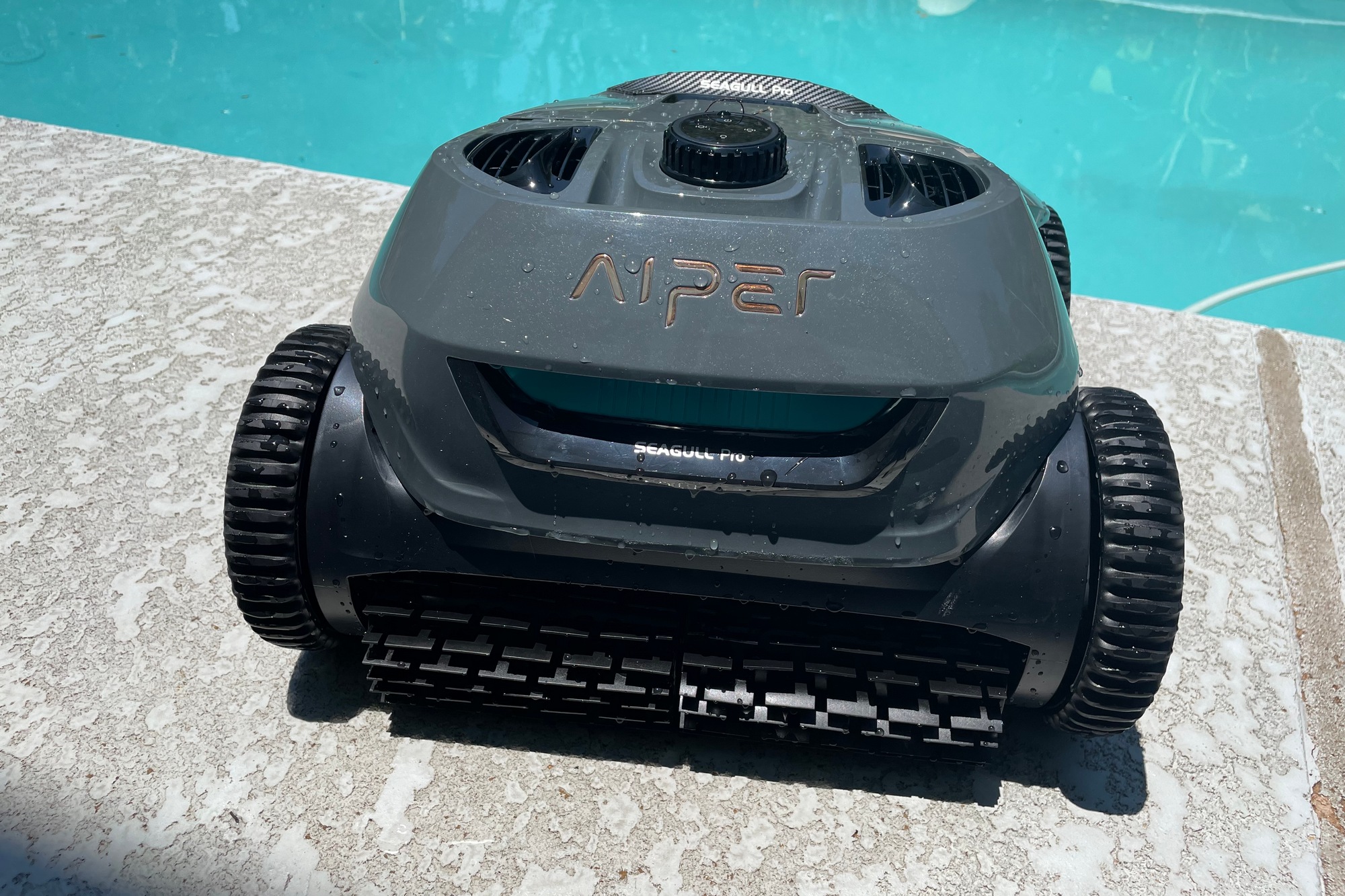
Pros
- Epic performance, effectively cleaning both leaves and other debris as well as algae
- 3-hour battery life ensures no surface is left untouched
- Doesn’t need to be disassembled for cleaning
Cons
- Can get stuck on obstacles
- Cleaning out the filter basket is a bit messy
- Very expensive
Price When Reviewed:
$999.99 MSRP
Why we like the Aiper Seagull Pro
The Aiper Seagull Pro isn’t as sophisticated as some of the higher-end robots on the market, but it does a fantastic job of cleaning a pool’s walls and floor. Equipped with scrubbing brushes on its underside, it crawls along the bottom of the pool, sucking up leaves, dirt, and grit. It then climbs the pool’s walls to scrub away any algae growing there. When it’s finished its cleaning run, it comes to rest near the edge of the pool, making it easy to retrieve.
Who should buy the Aiper Seagull Pro
Equipped with a beefy battery and a large debris basket, the Aiper Seagull Pro can make short work of even large pools—up to 3,200 square feet of surface area, with depths up to 10 feet. And for a trouble-free cleaning experience between runs, you need only pull its debris basket out of its top hatch, dump it, and rinse it with a hose.
Read our full
Aiper Seagull Pro review
Beatbot Aquasense Pro – best pool-cleaning robot for large pools, runner-up
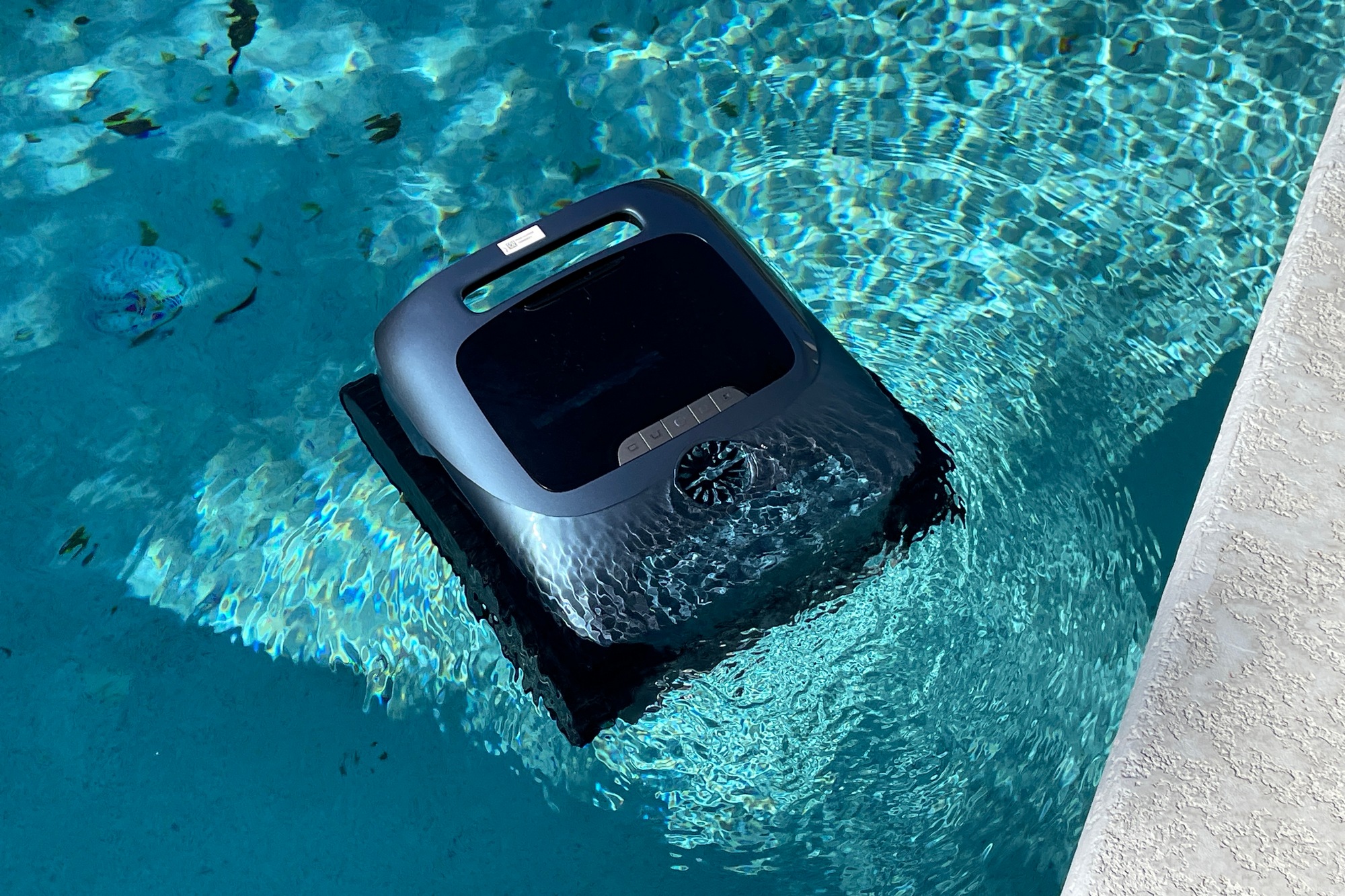
Pros
- Generally great cleaning performance, including on the pool’s surface
- Charging dock is easier and more convenient than the more typical plug and cable
- Floats to the surface for removal (most of the time)
- Optional water-clarification feature
Cons
- Gets stuck on obstacles in the pool
- At press time, its app didn’t work as advertised
- Extremely expensive
Price When Reviewed:
$2,299.00
Why we like the BeatBot AquaSense Pro
Beatbot got ahead of itself with this product, putting it on the market before its firmware was entirely finished. Fortunately, this beefy robot is mechanically sound, and it boasts an impressive set of features. It cleans not only the pool’s floors and walls, it skims the surface of the pool to suck up floating debris. And there’s no reason to grab a pole when it’s finished a job, because it automatically floats to the top and parks itself near the edge.
Who should buy the BeatBot AquaSense Pro
If you have a large pool, are looking for the ultimate in sophistication in a pool-cleaning robot, and you’re willing to wait for BeatBot to release some bug-squashing firmware updates, the AquaSense Pro is the pool-cleaning robot to buy. It’s loaded with features, including Wi-Fi connectivity and a charging dock that eliminates the need for cables, this bot can even clarify the water in your pool after it’s cleaned it.
Read our full
Aquasense Pro review
As with most tech products, the feature sets and capabilities of pool-cleaning robots advance as their price tags go up. Here’s a partial list of features that you should look for, sorted from the most common—and therefore should be present on even the least-expensive models—to the fancier features you’ll find on the more sophisticated—and pricier—models.
These specs go hand in hand: The larger the battery, the more area the robot should be able to cover. In my experience, most manufacturers exaggerate how many square feet their bots can cover on a single battery charge. Look for a model that promises coverage of at least twice the size of your pool’s square footage.
Mobile app support
Starting at about the $1,000 price range, robotic pool cleaners start to include Wi-Fi connectivity and mobile app support. These features lets you monitor battery life and the robot’s cleaning mode, and—at least in theory—map your pool visually. These features don’t always work as planned, but it can be helpful to get a push notification on your smartphone if the robot gets stuck somewhere.
Remote control
A few robots include a standalone remote control that let you “drive” the robot toward debris or tell it to abort its cleaning run altogether.
Self-parking
Many robots can park themselves near a wall at the bottom of the pool when they’re finished running, which makes them easier to retrieve with a pole (a hook attachment is always included). I’ve found this feature to be hit-or-miss affair with the inexpensive models, while the more advanced ones can rise to the surface of the pool and float there. At that point, you can simply pull them out of the water by hand, no tools needed.
Surface-cleaning capabilities
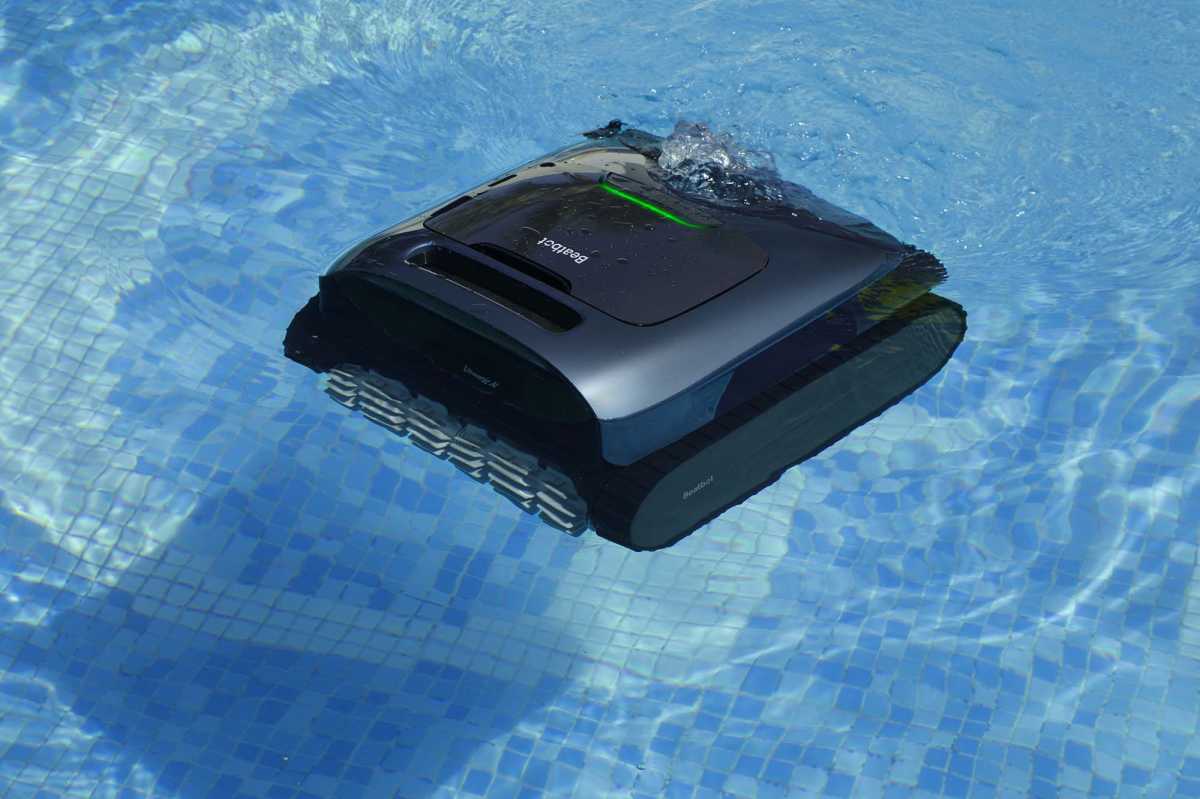
Beatbot
Want a robot that can skim leaves that haven’t yet sunk to the floor? Look for a model with a skimming feature–although note that these won’t provide perfect coverage due to the tendency of leaves to migrate while the robot is in motion.
Wall-cleaning capabilities
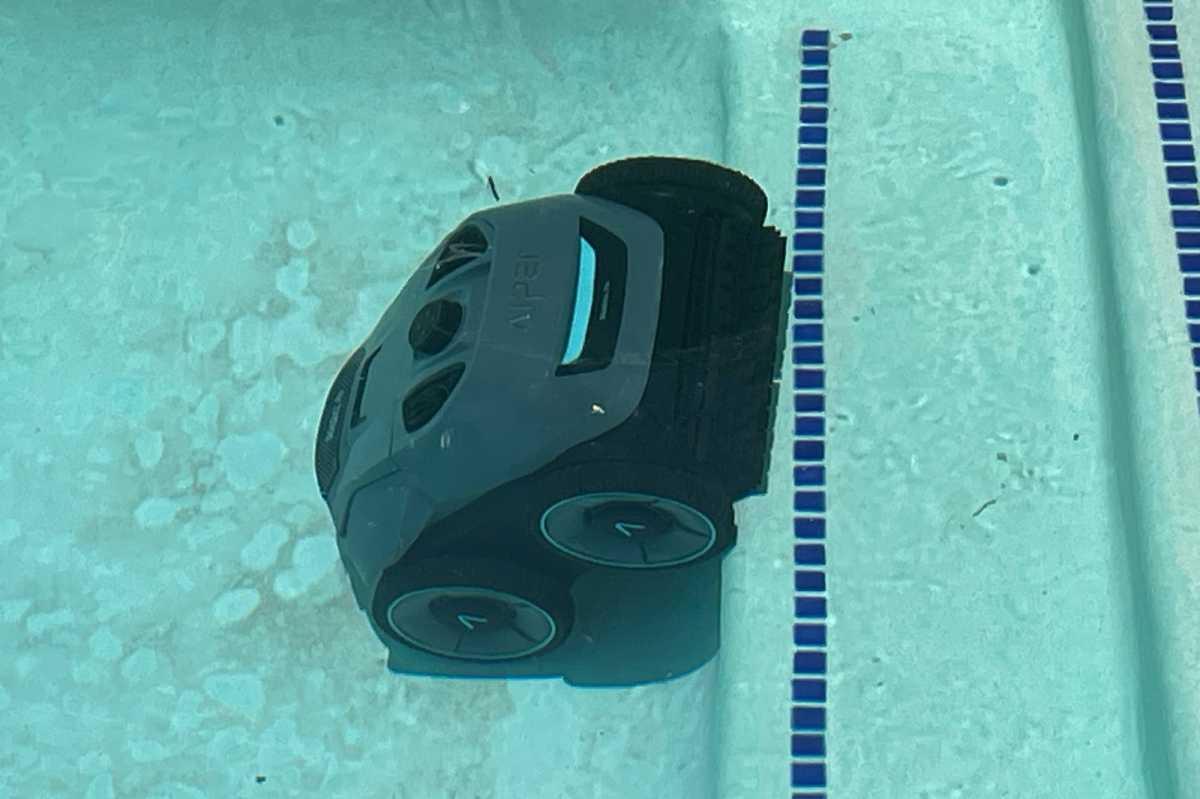
Christopher Null/Foundry
I didn’t think I needed this feature until I tried it out: Who gets debris on the walls of the pool? Well, you do, more than likely. Wall-cleaning robots can physically scrub off algae that you’d otherwise need to do manually, with a brush—an that’s a terribly painful, back-breaking task. These cleaners will have spinning treads; cheaper robots rely on suction power alone. The best models use spinning treads, while cheaper robots rely on just suction power.
Frequently asked questions about robot pool cleaners
How do robotic pool cleaners work?
Robot pool cleaners are in many ways the watery analogue of robot vacuum cleaners, although their navigational technologies vary considerably. Simple cleaners will use water jets to move back and forth in wide arcs, reversing each time they hit an obstacle while sucking up debris through a small port in the bottom of the robot.
More advanced cleaners have multiple mechanical motors and sensors that take the robot through a more ordered cleaning routine, moving back and forth across the pool like a person behind a lawnmower. Models that can clean the sides of a pool can climb its walls in the same type of pattern. The spinning brushes on these models are more effective at scooping up sand, dirt, and other fine debris.
How do you control a robot pool cleaner?
For the most part, you don’t. Robot pool cleaners are a “set and forget” affair, though more luxe models can be set to clean the floor only, walls only, both floor and walls, and so on. If you want to stop the robot mid-run, you can grab it with a hooked pole and turn it off manually or with a remote control if one was provided.
Note that mobile apps usually won’t work while the robot is in the pool, as the water and concrete tend to block the wireless signal.
How effective are robotic pool cleaners?
If you’re used to having something like an old-school Polaris cleaner run for 8 hours a day to keep your pool spotless, you might be disappointed in what a robot pool cleaner—which will generally run for less than 3 hours, and sometimes much less—can do. I’ve never completed a cleaning run with absolutely no debris left behind, but the models reviewed above do a solid job, sucking up 80 to 95 percent of debris, depending on how dirty things are when you started.
More advanced robotic pool cleaners, machines outfitted with treads, do a remarkably good job cleaning up fine debris and algae—much better than hose-type cleaners that need to be pulled out of the pool when you want to swim—and are nearly as good as a human with a brush. This capability alone makes it worth considering a more advanced—and more expensive—unit.
What kind of maintenance do robotic pool cleaners require?
Very little. Robotic pool cleaners need to have their debris baskets cleaned out after each run—you might need to use a brush to clean the filter screen—and you should dry them off, though most are very good at draining within a few minutes of removal from the pool. After a few hours of recharging, the robot should be ready to run again.
Pool robots are electronic devices, so they are prone to breaking down over time—especially given that they will spend ample time underwater. Never leave a robot in the water for longer than its running cycle, and always store it out of direct sunlight, so UV rays don’t break down its plastic components. Naturally, batteries will lose capacity over time, and these are not user-replaceable on any robot I’ve seen.
Are there robot pool cleaners for above-ground pools?
Virtually every robotic pool cleaner can clean in-ground pools, but many models can also clean above-ground pools, which have different types of surface materials and often lack a smooth floor for the bot to traverse.
Some pool-cleaning robots can handle both types of pools, but don’t assume the one you’re considering can. The manufacturer’s product specifications should indicate which type(s) of pool the robot is designed to clean.
How we test robot pool cleaners
I test robotic pool cleaners in two ways: I start with real-world tests by letting debris build up for a few days, I then drop the robot into the water to see how it fares. This isn’t scientific—and it’s seasonally dependent on falling leaves—so I also devised a synthetic test using about 100 craft leaves made from silk. These I scatter across the pool before initiating a standard cleaning run. Measuring the portion of leaves left behind makes it easy to make an apples-to-apples comparison among various robots’ cleaning capabilities.
TechHive has not tested any robot pool cleaners in an above-ground pool.
Other robot pool cleaners we’ve tested
We’ve evaluated many other robot pool cleaners, but apart from the Ofuzzi Cyber 1200 Pro, it’s been a love or hate relationship to date. If none of our top picks check all the boxes for you, take a look at these other products. Perhaps you’ll find a redeeming factor we’ve overlooked.
Aiper Scuba S1: As much as we like Aiper’s higher-end pool-cleaning robots, we were disappointed with the performance of its budget-priced entry.
Hydrus Roker Plus: Don’t be tempted by this robot pool cleaner’s low price tag. We found it did a poor job of cleaning our pool, its battery life too short, and it was difficult to clean of the debris it did pick up.
Inse Y10 Pool Vacuum Robot: The manufacturer says its smallish robot is designed for moderately sized pools up to 1,100 square feet. It’s one of the least-expensive bots we’ve tested, but there’s a big difference between inexpensive and just cheap.
Ofuzzi Cyber 1200 Pro: This robot won’t clean your pool’s walls, but we found that it did a great job vacuuming up leaves and other debris from the bottom of our pool. It’s attractively priced, too.

